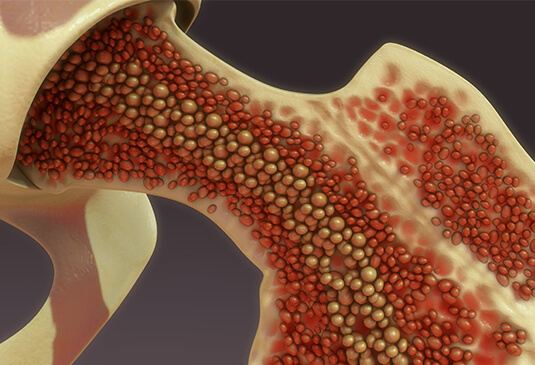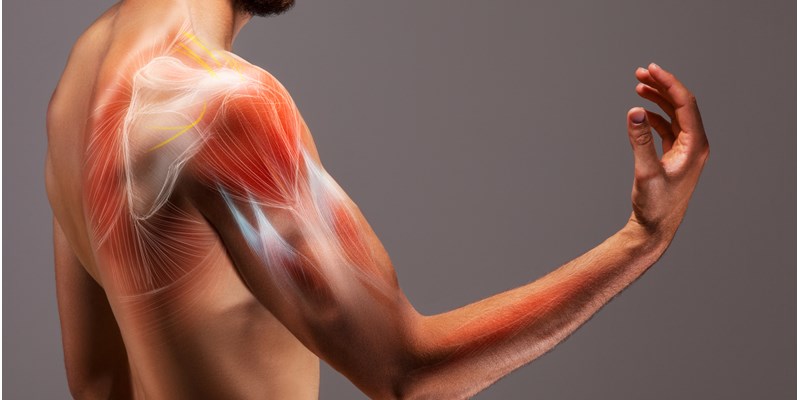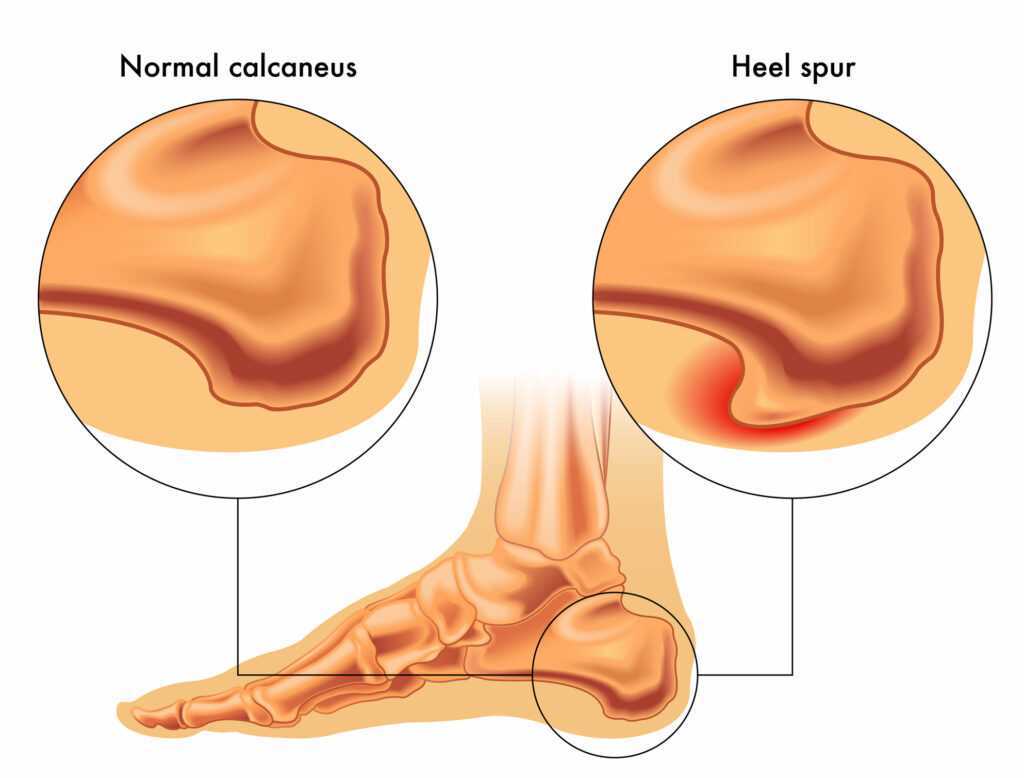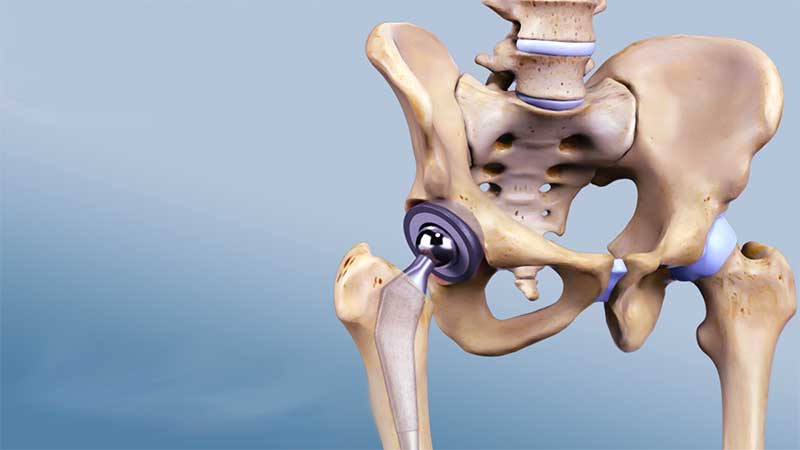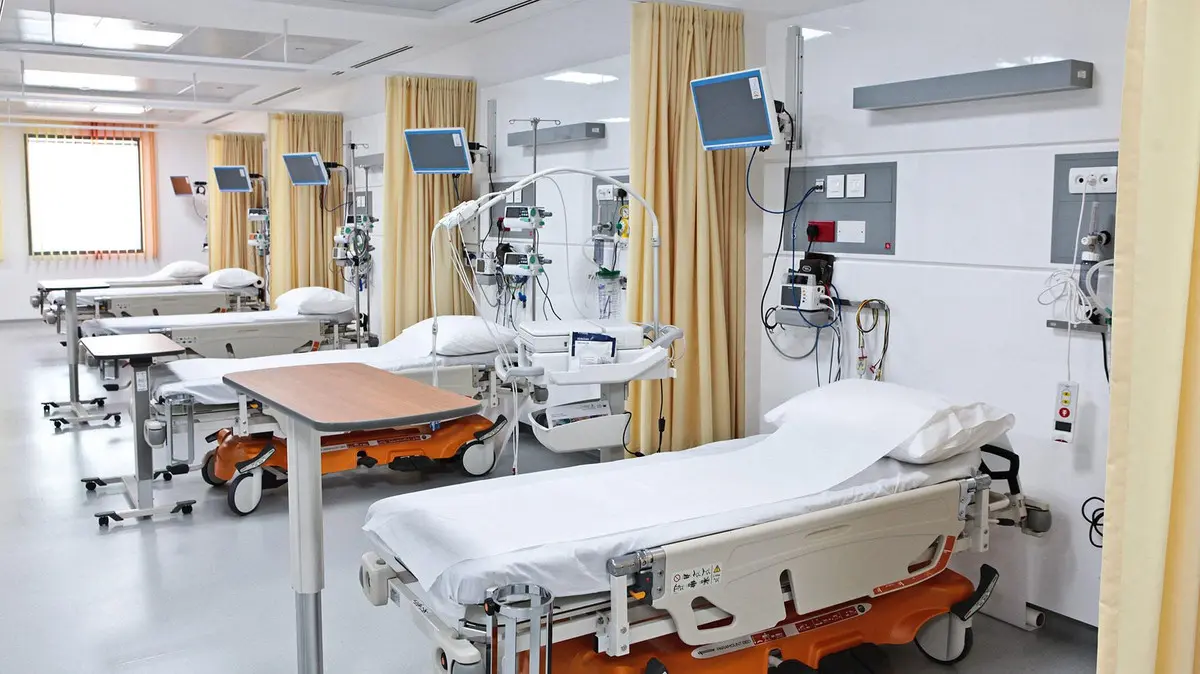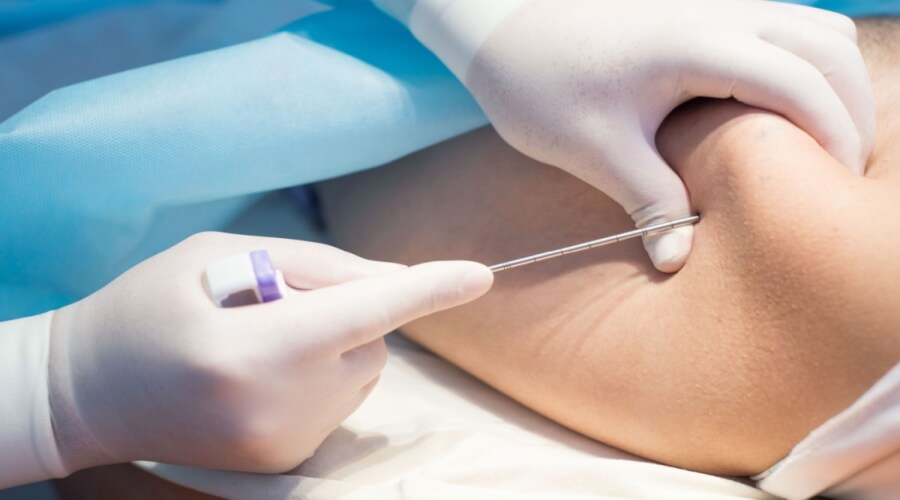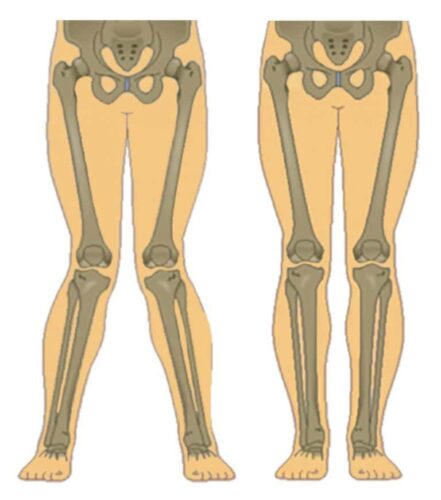Explore the Cost of Leg Lengthening Surgery in Egypt and the Key Risks and Challenges of the Procedure
How much does leg lengthening surgery cost in Egypt? This is one of the most important questions that a person suffering from leg length discrepancy or a parent of a child with this condition needs to know. In the following paragraphs, we will shed light on leg length discrepancy, including its causes, treatment methods, the surgical procedure, and the key risks associated with it. So, stay with us to learn more.

How much does leg lengthening surgery cost in Egypt?
Check out the amazing improvements in the appearance of your legs with an effective treatment for leg lengthening with Dr. Amr Amal.
Many people want to know the total cost of leg lengthening surgery in Egypt to determine if it fits their budget or not. In this article, we tell you that the cost of this surgery ranges from 10,000 to 30,000 Egyptian pounds, and the amount varies depending on the experience, skill, and expertise of each doctor. This is in addition to the hospital where the surgical procedure is performed and the medical care the patient receives.
Symptoms of Leg Length Discrepancy and Its Types
Leg length discrepancy can appear in one of the patient’s legs or in both, and it can also be internal or external. It may be present since birth, but in some cases, it appears during adolescence.
The doctor can accurately diagnose the patient’s condition through tests, X-rays, and analyses. This is if he cannot see clear symptoms through clinical examination, which may include the following:
- Feeling pain and stiffness in one of the knees or both.
- Feeling pain in the pelvic joint area.
- Noting that one leg is longer than the other, leading to an imbalance in the patient’s movement and sometimes causing a limp in certain cases.
- Aesthetic changes in the appearance of the legs or knees, which make the patient feel embarrassed and lead to wearing clothes that hide this deformity.
For more details on leg lengthening surgery and its types, please read this article.
Causes of Leg Length Discrepancy
Before we discuss the causes of leg length discrepancy, let’s first understand the concept of leg length discrepancy. It is a deformity that occurs in a person’s body in the area of the legs, characterized by the knees being far apart until the ankles are brought together. Leg length discrepancy may indicate a specific medical condition, such as scoliosis or Blount’s disease.
Certainly, there are several reasons that can lead to leg length discrepancy, and we will discuss them in some detail as follows:
- Paget’s Disease: This is one of the well-known diseases that affect the elderly and has a negative impact on the bone remodeling process, as it does not occur to the required extent. Consequently, this condition can lead to leg length discrepancy and many joint problems. It is better to diagnose the condition early to receive appropriate treatment promptly.
- Rickets in Children: Rickets is a bone disease that affects children, resulting in leg length discrepancy and some bone deformities. This condition can occur due to prolonged deficiency of calcium, phosphorus, or vitamin D. It may also be caused by a genetic defect that prevents proper absorption of vitamin D, ultimately leading to weakened bones and leg curvature.
- Scoliosis: Some forms of scoliosis can disrupt the growth of bones, leading to leg curvature as a person ages.
- Blount’s Disease: Also known as infantile tibia vara, this condition causes abnormal development of a child’s tibia bones, bending them beneath the knees. The severity of the bend can worsen as the child begins to walk, and symptoms may appear either early in life or be delayed until adolescence. Blount’s disease can lead to long-term knee problems. It is more common among girls in specific regions, such as the United States and Africa. Contributing factors to the development of Blount’s disease may include excessive childhood weight and early walking.
- Lead Poisoning and Fluoride Poisoning: Specific cases of lead poisoning and fluoride poisoning can result in bone deformities.
- Abnormal Bone Development or Tissue Malformation: Abnormal bone development or tissue malformation can lead to leg length discrepancy.
- Improperly Healed Bone Fractures: Leg length discrepancy can result from bone fractures that did not heal properly.
In some cases, a child may be born with leg length discrepancy due to a folded position in the mother’s womb, but afterward, the legs gradually return to their normal shape as the child starts walking and their feet can bear weight at around one and a half years of age.
Non-Surgical Treatments for Leg Length Discrepancy:
Certainly, there are some non-surgical methods that can significantly help alleviate the symptoms accompanying leg length discrepancy, although they do not provide a complete cure. These methods mainly aim to reduce complications and include:
- Physical Therapy: The doctor creates a suitable physical therapy program for each case, focusing on strengthening the thigh and leg muscles. These exercises help distribute the load and pressure evenly on the knee joints.
- Weight Reduction: Excess weight can have a noticeable impact on the condition, leading to its deterioration and increased risks affecting the knee joint and leg bones. Therefore, weight loss plays a significant role in reducing the load and pressure, stabilizing the knee joint, and significantly reducing associated complications.
Medications: Medications are one of the treatment methods that a doctor may turn to when a patient suffers from various complications accompanying leg length discrepancy, such as joint inflammation, tendon problems, and tissues surrounding the knee joint in particular, and leg joints in general. However, medication alone does not completely eliminate leg length discrepancy.
Non-Surgical Orthopedic Treatment: People who suffer from leg length inequality due to varying degrees of curvature from one leg to another may opt for non-surgical treatment methods. This procedure involves adding some padding to the patient’s shoes to help with balance and equalize leg length, thereby reducing the discomfort the patient experiences.
When Does Leg Length Discrepancy Require Surgery?
Today, we will present some reasons that may necessitate leg length discrepancy correction surgery when the condition does not respond to other non-surgical treatment methods, and the patient is experiencing one of the following reasons:
- Severe Pain: If a person is suffering from severe pain that they cannot endure due to neglecting their leg length discrepancy for a long time and not taking medications.
- Knee Strain: When the knee is subjected to significant stress, it can often lead to damage.
- Joint Infections: When a patient experiences infections in the knee joint, it can lead to joint roughness and discomfort.
- Noticeable Impairment in Walking: When a person noticeably loses their ability to walk normally, it has a significant impact on their ability to engage in various activities.
- Inability to Participate in Sports and Hobbies: When a person loses the ability to engage in sports and hobbies they enjoy naturally.
Surgery for leg length discrepancy is recommended in the following cases:
- Severe leg length discrepancy in children that does not respond to non-surgical treatment methods.
- Leg length discrepancy resulting from knee arthritis and joint inflammation.
- Healthy, lean patients under the age of 60.
Pre-Surgery Preparation for Leg Length Discrepancy:
The doctor will request X-rays from the patient to examine the condition accurately and determine the exact surgical requirements, including the need for bone cutting in the knee. The surgery is performed under anesthesia, so the patient should abstain from food and drink for several hours as directed by the doctor. The patient should also inform the doctor of any medications and dietary supplements they are taking and avoid blood-thinning medications. Some important blood tests may be conducted before the surgery.
How is the Leg Length Discrepancy Correction Surgery Performed?
Leg length discrepancy correction surgery is a surgical solution that a doctor turns to for treating leg length discrepancy that does not respond to other non-surgical treatment methods. The condition can progress to affect the appearance of the legs, limit the patient’s mobility, and hinder various daily activities, leading to severe pain. The surgery is performed by following one of the following methods:
- Bone Cutting: This procedure involves cutting a portion of the leg bone to reshape and align it, correcting the curvature and achieving the natural alignment of the legs.
- Guided Growth: This technique is used in children who have not reached puberty. A metal brace is attached to the healthy side of the child’s leg, which stops the growth on the healthy side while allowing growth on the side affected by the curvature to continue. This continues until the knees reach a symmetrical shape, at which point the brace is removed.
How Long Does Leg Length Discrepancy Treatment Take?
Patients suffering from leg length discrepancy typically require a treatment period ranging from a few months to a year to alleviate their symptoms. The duration also depends on the patient’s adherence to a physical therapy and rehabilitation program, which accelerates the healing and recovery process. Rest and full balance are essential during treatment for leg length discrepancy. Dr. Amr Amal, our medical expert, can provide specialized treatment for leg length discrepancy. If you’re interested in learning about the possibility of increasing height after leg length discrepancy correction surgery and the recommended post-operative tips, we advise you to refer to the following article.
Physical Therapy After Leg Length Discrepancy Correction Surgery:
Dr. Amr Amal, a consultant in orthopedic and joint surgery at Ain Shams University, recommends specific exercises to help strengthen and restore the natural shape of the legs after leg length discrepancy correction surgery.
Foam Roller Exercise: This exercise involves the patient holding a foam roller between their legs. This helps activate the hip muscles while tightening the knees inward. Then, the patient places the foam roller between their knees while standing with a gap between the knees and applies pressure to the roller. The patient should strive to keep the knees straight while bending forward to touch the toes.
Side-Lying Exercise: In this exercise, the patient lies on their side with their feet stacked on top of each other and the knees bent at a 90-degree angle. It’s essential to maintain a straight line from the head to the knees, keeping the knees together while lifting the upper foot off the lower foot and rotating the upper foot inward.
Toe-Touching Exercise: In this exercise, the patient stands with a gap between their feet of up to three inches. Then, the patient moves their toes toward each other until they touch the big toes. Afterward, the patient sits down as low as possible while extending their arms straight forward to maintain balance. The patient then squats as much as possible, with limited movement range during this exercise.
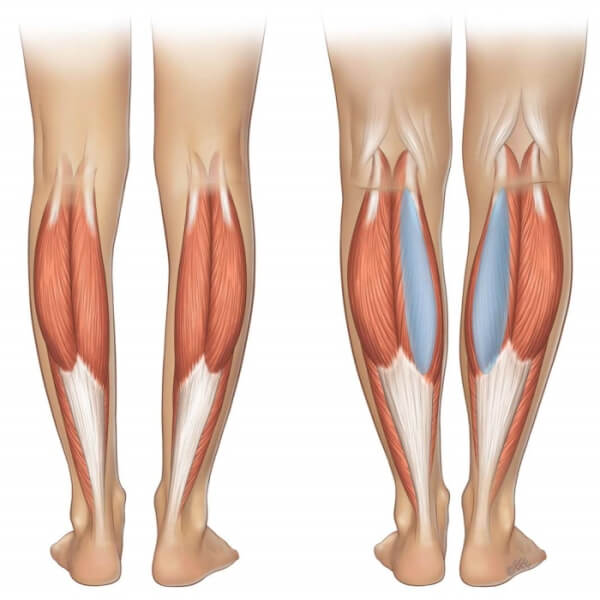
Success Rate of Leg Length Discrepancy Correction Surgery in Egypt
We care about your comfort and health. Schedule an appointment with Dr. Amr Amal and embark on the journey towards straight and attractive legs.
If the patient’s condition is advanced, many doctors recommend surgery to correct the patient’s cosmetic appearance and restore their ability to perform various activities effectively, as they did in the past. Leg length discrepancy correction surgery is known for its high success rate, reaching up to 90%, with a very low risk of complications. Here are some tips that can significantly ensure the success of the surgery:
- Choose an experienced and skilled surgeon for leg length discrepancy treatment.
- Patients should lose excess weight, as it can lead to surgical failure and not achieve the desired outcome.
- Patients should diligently follow the treatment plan outlined by the doctor after the surgery, including medication, physical therapy, and rehabilitation. This ensures excellent results from the surgery.
What Are the Risks of Leg Length Discrepancy Correction Surgery?
Typically, leg length discrepancy correction surgery is safe, but it may have some side effects, including:
- Infection: The patient may be susceptible to infection.
- Allergic Reaction: Some patients may have allergic reactions to anesthesia.
- Non-union of Bones: Bone healing may not be successful.
- Severe Pain: Patients may experience severe pain that they cannot tolerate.
- Nerve, Tissue, and Blood Vessel Injury: Some nerves, tissues, and blood vessels may be injured.
If you want to know more about the risk level of leg length discrepancy correction surgery and its success rate, you can click here.
The Best Doctor for Leg Length Discrepancy Correction
Leg length discrepancy is an injury that requires an experienced doctor with significant expertise and high competence. In this article, we inform you that what you are looking for can be found in one of the best orthopedic doctors in Egypt, Dr. Amr Amal. He holds a master’s and doctorate degrees from Ain Shams University, the same university from which he graduated with distinction and honors. Dr. Amr works as a faculty member at Ain Shams University and is known for his welcoming approach to his patients’ complaints. He is committed to selecting the most suitable treatment methods that align with patients’ needs, combining low cost with high-quality service. Dr. Amr is distinguished by his straightforward style, open-mindedness, and his dedication to personally follow up with patients and provide the necessary medical care. He relies on using the best modern techniques and devices that aid in performing surgical procedures more efficiently with a higher success rate.
What Is the Recovery Time for Leg Length Discrepancy Correction Surgery?
If a person undergoes leg length discrepancy correction surgery, they need a recovery period ranging from two to three months for proper healing of the bones. However, the duration of recovery may vary from one patient to another depending on the severity of the discrepancy and any other underlying medical conditions that might affect the healing process. Additionally, the recovery period can vary based on the type of surgery the patient underwent and the patient’s overall health.
Is Leg Length Discrepancy Considered a Disability?
The concept of disability encompasses any condition that results in the patient’s inability to move or perform their daily activities normally. Therefore, we can say that leg length discrepancy is a form of disability due to its impact on a person’s mobility, walking, and the ability to engage in regular activities, especially when the condition is neglected and reaches advanced stages. In such cases, surgery may become the only solution to address the disability.
Does Leg Length Discrepancy Affect Walking?
Yes, if you look at a large number of cases with leg length discrepancy, you will find that it causes the legs to be unequal in length, leading to an appearance of limping while walking. Moreover, it doesn’t only affect a person’s ability to walk but also has an impact on the lumbar vertebrae located in the lower back region due to the excessive pelvic movement during walking and movement.



